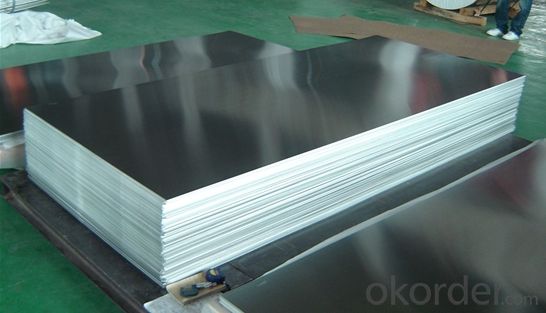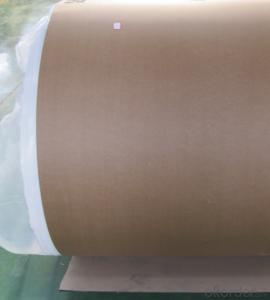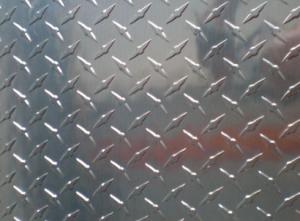Anodized Perforated Aluminum Sheets - Cold Rolled and Hot Rolled Aluminum Slab Stocks
- Loading Port:
- Shanghai
- Payment Terms:
- TT OR LC
- Min Order Qty:
- 6 m.t
- Supply Capability:
- 6000 m.t/month
OKorder Service Pledge
OKorder Financial Service
You Might Also Like
Specification
1.Structure of Product Description
Cold rolled aluminum sheet is widely used in the field of construction field and decoration field, etc.
There are many different grades, such as: 1000 series, 2000 series,
8000 series5000 series, 7000series,etc. The detailed grade are as follows: 1010, 1050,1060,1100, 2024, 3003, 3005, 3105, 5052,5754,5083,6061,6063,8011, etc.
The temper is include H14, H22, H24, H44,H112, etc.
2. Main features of the product
a.Competitive price
b.Frist-Class Service.
3. Image.

4. Product detailed sizes:
1000mm*2000mm, 1219mm*2438mm,100mm*3000mm, etc.
5. FAQ:
What is the quality standard?
---Usually our standard is GB3880-2006 or others.
What is the width range?
---It is from 500mmto 2000mm, etc.
What is the length range:
---It is from 2000mm to 6000mm, etc.
What is the MOQ for your products yet?
---Normally it is around 9tons/each size.
How many tons did you export in one year?
---Normally it is around 800 tons totally.
Where is your client from?
---Normally it is from Japan, USA, ENGLISH, SINGAPORE, ETC.
What is your mainly products?
---Normally they are aluminum sheet,small-5-bar checkered sheet,big-5-bar checkered cold rolled aluminum sheet, mirror finish aluminium sheet,aluminum sandwich panel, aluminum composite panel,etc.
- Q: Does anyone know how to polish aluminum on a motorcycle that isn't too expensive to do?
- www.okorder /
- Q: Can 101 aluminum sheets be used in the production of consumer electronics?
- Yes, 101 aluminum sheets can be used in the production of consumer electronics. Aluminum is a lightweight and durable material that is commonly used in various electronic devices, including smartphones, laptops, and tablets. The specific grade of aluminum, such as 101, determines its properties and suitability for different applications.
- Q: What are the different edge treatments available for aluminum sheets?
- Some of the different edge treatments available for aluminum sheets include straight edges, beveled edges, rounded edges, and hemmed edges. These treatments are used to improve the appearance, safety, and functionality of the aluminum sheets in various applications.
- Q: A sample of aluminum and a sample of steel have superficially identical microstructures. Which would you expect to be stronger, and why?
- steel has Carbon in it to make it harder..the molecular attraction in steel Fe is greater than in aluminium aluminium is softer.... having said that..aluminium comes with additives as well the grade of aluminium used for the space station or car hubs is far better than aluminium used for windows...
- Q: Describe the steps involved in the production of aluminum sheets.
- <p>The process of manufacturing aluminum sheets involves several key steps. Initially, raw materials, primarily bauxite, are mined and then processed to extract alumina (aluminum oxide). This alumina is then mixed with cryolite and fed into a reduction cell where it is subjected to a strong electric current, causing the aluminum to be reduced and extracted. The molten aluminum is then poured into molds to cool and solidify into ingots. These ingots are subsequently rolled into sheets in a hot or cold rolling process, where they are gradually reduced in thickness and width. The sheets are then annealed to improve their ductility and strength. Finally, they undergo various finishing processes such as cleaning, coating, or cutting to meet specific requirements before being packaged and shipped to customers.</p>
- Q: i need to know these things please....can aluminium withstand the forces of being in a cargo hold on a air freight, can it withstand extreme temps and to what extent an is it microwavable?? please help me
- No metals are microwavable, they will ruin any microwave oven by producing sparks. Even ceramic plates with a little metallic paint eg of silver will spark. Aluminium on its own has little strength but when mixed with small amounts of eg copper or manganese it aquires great strength while remaining light. In addition it has the advantage of being very resistant to oxidation and corrosion. It is certainly used extensively in aircraft construction. Due to being non toxic it used to make cans for beers, soft drinks (sodas) etc However it doesn't stand up well to high temperatures, its melting point is just at 660 degrees celsius, by comparison for iron it is 1540 and tungsten 3420.
- Q: Are 101 aluminum sheets suitable for outdoor signage?
- Outdoor signage can indeed be made from 101 aluminum sheets, which possess the necessary qualities for such purposes. Aluminum is renowned for its ability to endure and resist weathering, rendering it a perfect material for outdoor applications. The 101 aluminum alloy, in particular, has been crafted to possess exceptional strength and resistance against corrosion, making it even more suitable for outdoor signage. It can withstand harsh weather conditions, including rain, snow, UV exposure, and temperature fluctuations, without succumbing to corrosion or deterioration. Moreover, aluminum sheets are lightweight, facilitating their installation and transportation. All in all, 101 aluminum sheets offer a dependable and enduring solution for outdoor signage.
- Q: Does anyone know why Mercury -(Thimerosal) is used in Flu Vaccinations and where Mercuryisnot used Aluminium in other vaccines ? While these are known to be toxic metals, can these cause headaches, severe hot burning heads and or Sinusitus ?
- Thimerosal is not the same as mercury. It's a mercury-based preservative which to prevent the growth of germs, bacteria and fungi, that can contaminate them. It's used in seasonal flu vaccine because the vaccine is produced in large quantities and often in multi-dose vials. Thimerosal helps safeguard against possible contamination of the vial once it is opened. The aluminum in vaccines is aluminum hydroxide, aluminum phosphate, alum (potassium aluminum sulfate), or mixed aluminum salts. They're an adjuvant added to enhance the immune response in the vaccinated individual. Whether or not something is toxic has to do with how much a person receives not the substance itself. People can die from drinking too much water, but we don't go around calling water toxic. The amount of mercury or aluminum in vaccines is so small that it's not toxic. You ingest more mercury by eating fish and a baby ingest more aluminum in breast milk than they get in a vaccine. So if mercury and aluminum caused head aches, severe hot burning heads or sinusitis in a person, that person would have a lot more to worry about than vaccines since they would be exposed to those things in so many other ways.
- Q: Can aluminum sheets be painted?
- Yes, aluminum sheets can be painted. However, the process of painting aluminum sheets may require some preparation to ensure proper adhesion and durability of the paint. The most important step is to clean the surface of the aluminum sheet thoroughly to remove any dirt, grease, or corrosion. This can be done using a mild detergent and water or a specialized aluminum cleaner. After cleaning, the surface should be dried completely before painting. To improve the paint adhesion, it is recommended to apply a primer specifically designed for use on aluminum. The primer will create a bond between the aluminum surface and the paint, ensuring better adhesion and longevity of the paint job. After the primer has dried, a suitable paint can be applied to the aluminum sheet. It is important to choose a paint that is compatible with aluminum and provides good adhesion and weather resistance. Acrylic or epoxy-based paints are commonly used for painting aluminum. Before painting, it is advisable to test a small inconspicuous area to ensure that the paint adheres properly and achieves the desired finish. Additionally, it is important to follow the manufacturer's instructions for the specific paint and primer being used, including proper drying times and application techniques. Overall, while aluminum sheets can be painted, it is essential to properly prepare the surface, use suitable primer and paint, and follow the recommended procedures to achieve a durable and aesthetically pleasing paint finish.
- Q: So I want to solder aluminum cans together for this project I have. What tools will I need?
- Your aluminum can's are unfortunatly too thin to solder. Your best bet for this project, is going to be a hot glue gun. Hope this helps.
Send your message to us
Anodized Perforated Aluminum Sheets - Cold Rolled and Hot Rolled Aluminum Slab Stocks
- Loading Port:
- Shanghai
- Payment Terms:
- TT OR LC
- Min Order Qty:
- 6 m.t
- Supply Capability:
- 6000 m.t/month
OKorder Service Pledge
OKorder Financial Service
Similar products
Hot products
Hot Searches
Related keywords




























